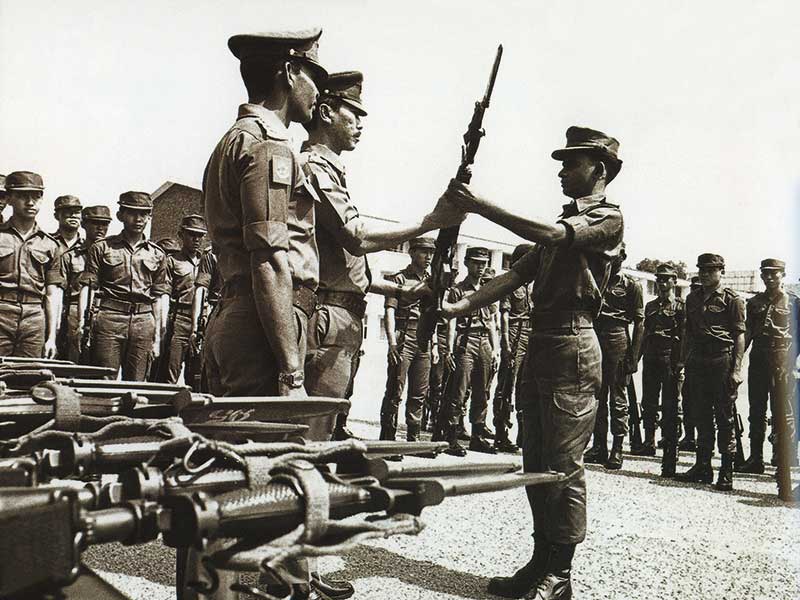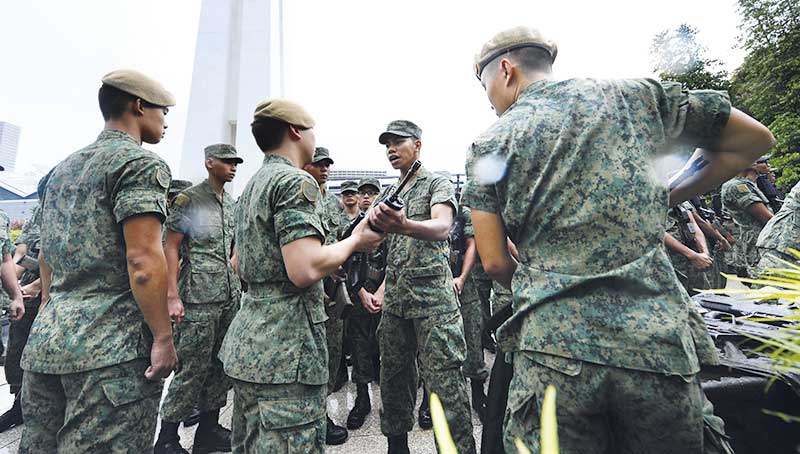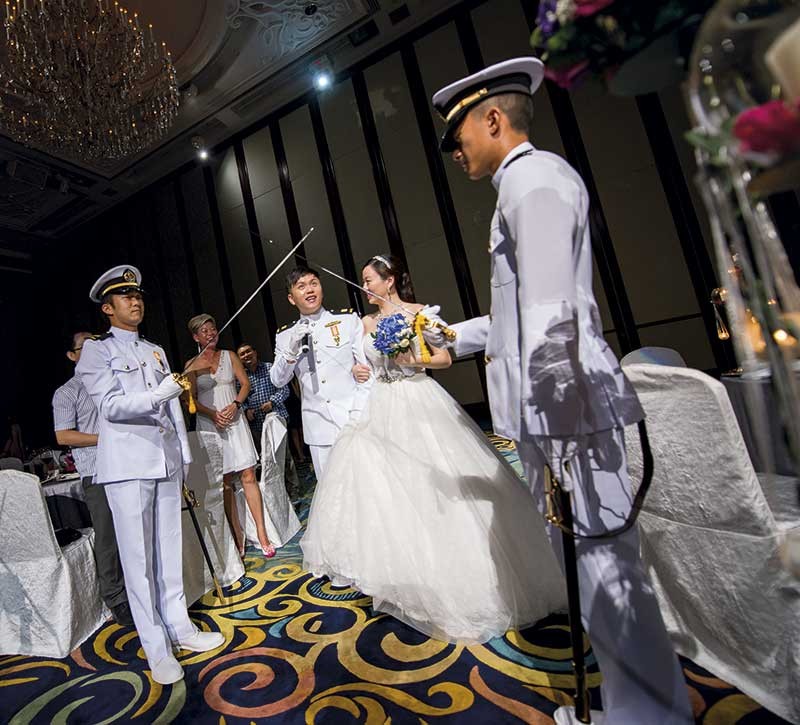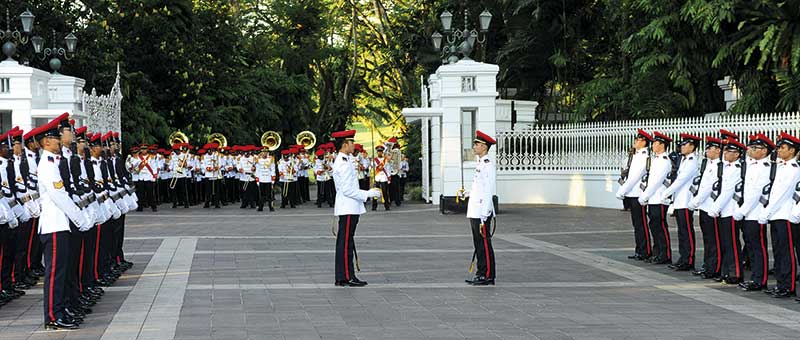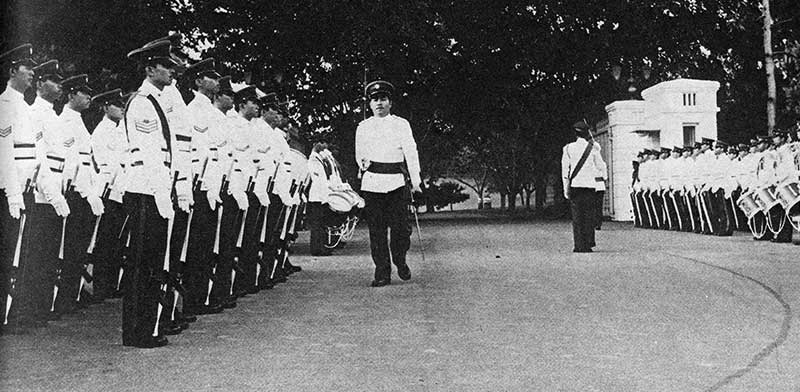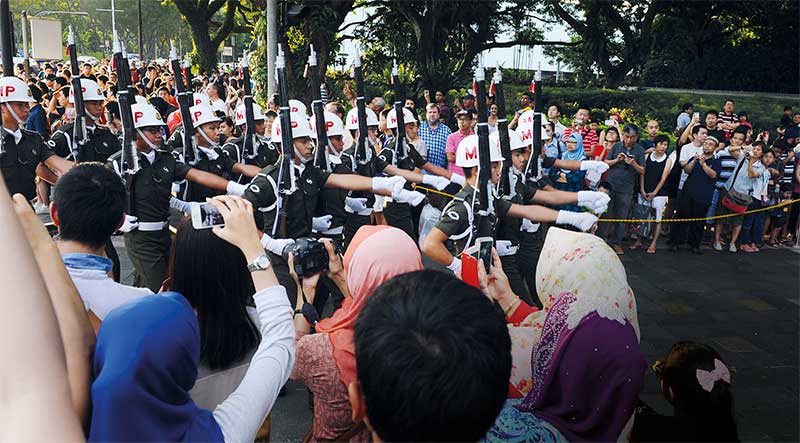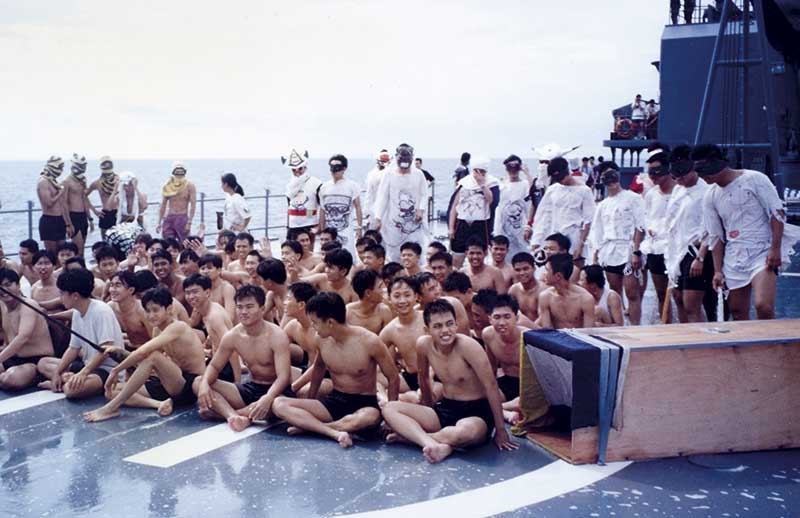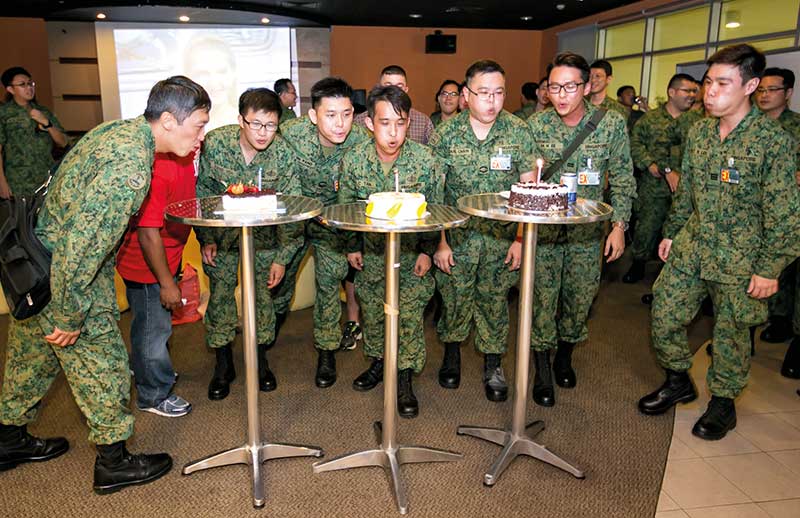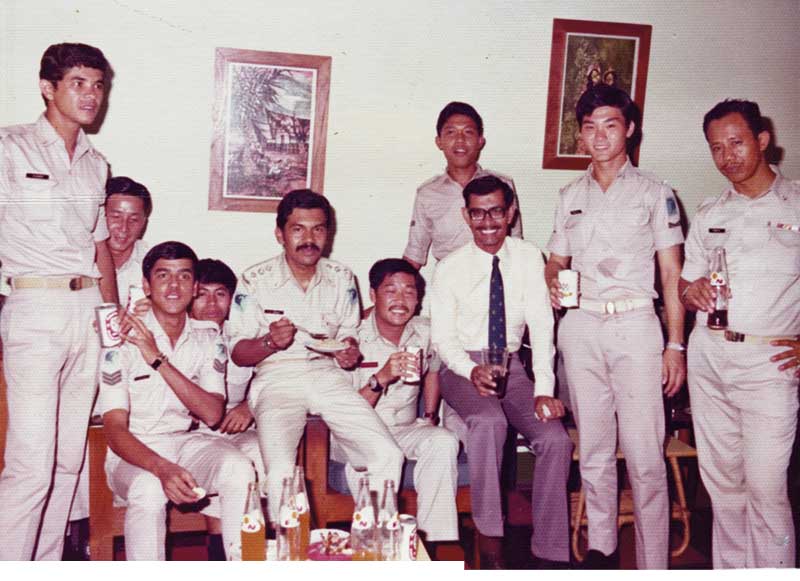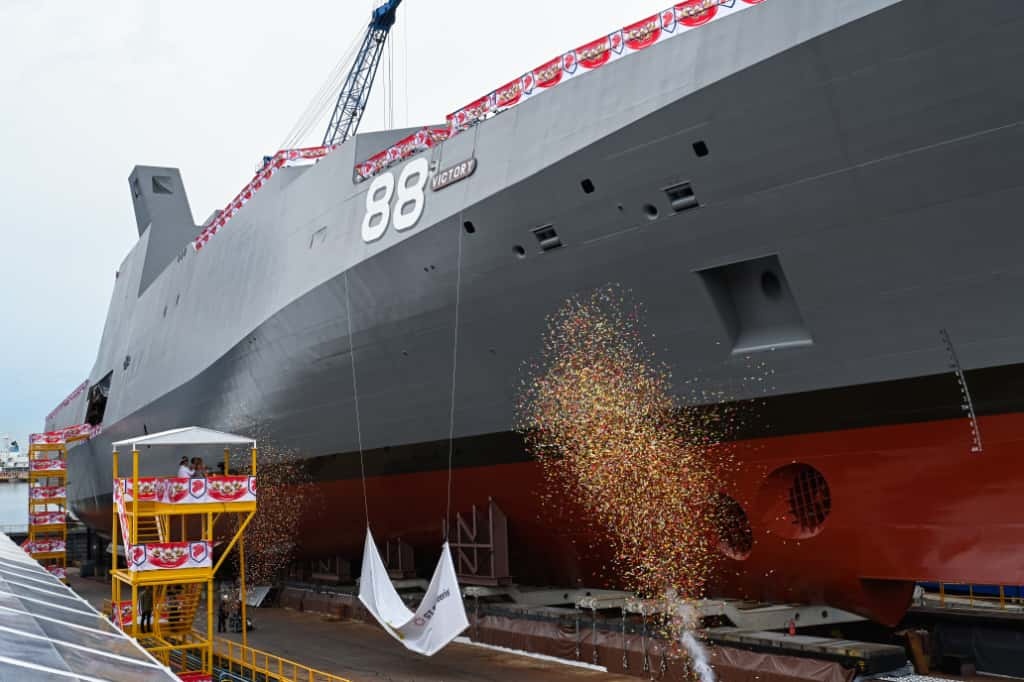MILESTONES
TIME-HONOURED TRADITIONS
04 Jan 2016
PIONEER uncovers the significance behind some of the SAF's military customs and traditions.
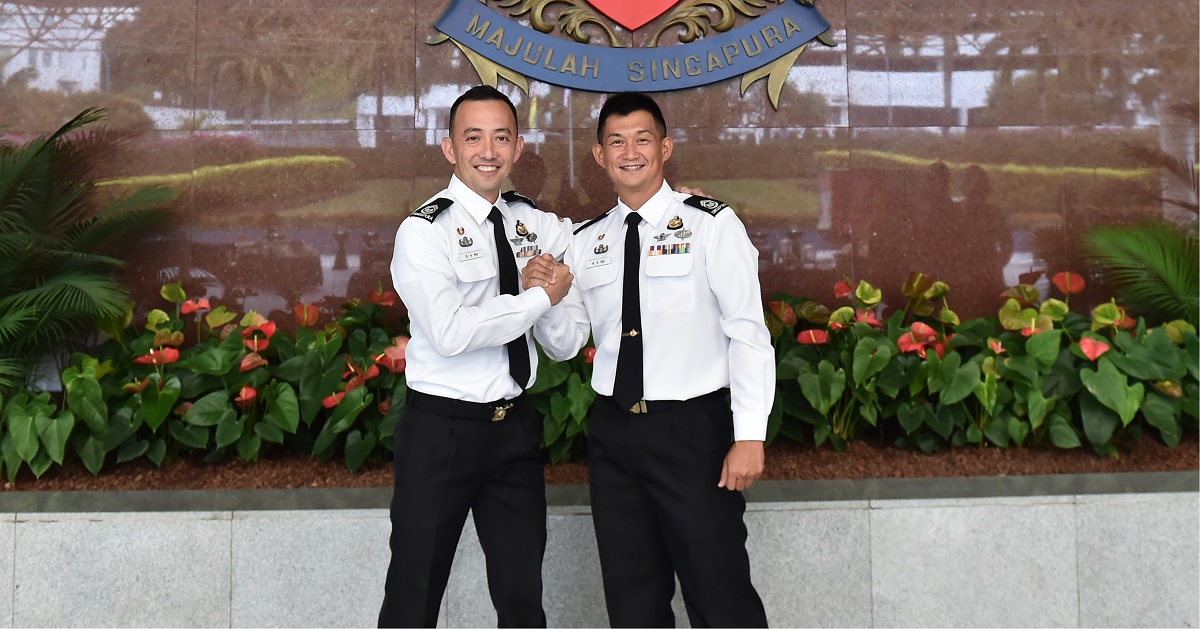
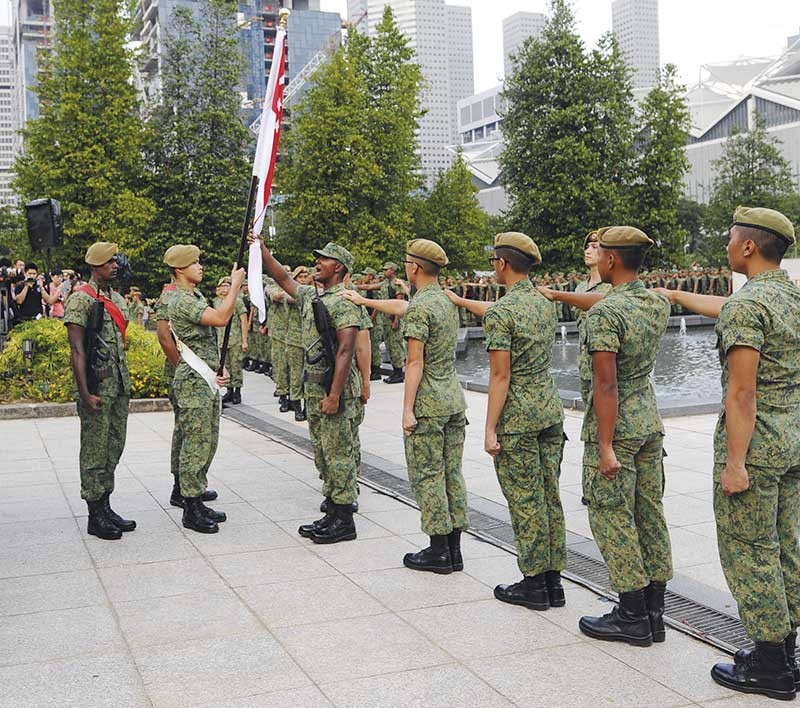
Those who have served National Service (NS) would remember the day they received their rifles - how they grabbed the weapon with both hands from their commander and swore to protect Singapore with their lives.
Generations of soldiers have taken part in the weapon presentation ceremony. It is one of the many long-standing military customs and traditions in the Singapore Armed Forces (SAF) that continues to be practised today.
But some of these practices are not always understood or appreciated by the younger generations.
Why are sentries still guarding the Istana when the police have taken over the security of the premise? Why do some soldiers look forward to having a military wedding? Why do sailors go through an initiation when they cross the Equator?
In short, why do people still keep up military traditions? Read on to find the answers.
Trusted to bear arms
A rifle is a deadly weapon that can only be entrusted to a responsible person. Hence, when an 18-year-old gets his rifle, it is a pivotal moment that marks his transition from a boy to a man.
In the SAF, recruits receive the Singapore Assault Rifle 21 in a weapon presentation ceremony, in the first or second week of Basic Military Training.
The ceremony is usually held in the evening at a parade square dimly lit by torches or candlelight. In the past, drink cans filled with sand and kerosene were used. The setting creates a battlefield-like atmosphere where soldiers go about their tasks under the cover of darkness.
One by one, each recruit receives his rifle from his commander. Then, with their rifles in hand, they swear an oath of allegiance to the country. This is led by a recruit who holds the state flag. All recruits have a hand on another's shoulder to symbolically connect themselves to the state flag, and take the oath as one.
Different forms, same meaning
The origin of the ceremony can be traced back to tribal times when weapons were presented to members who had reached adulthood.
In the early years of the SAF, the ceremony was simple - take your weapon and go. Recruits were not told of its meaning. But things have since changed.
"Today, we have a full parade where the commanding officer explains its significance," said Chief Warrant Officer (CWO) (Ret) Peter Estrop, 56, Chairman of the Editorial Committee of the Army Customs and Traditions handbook.
"The weapon presentation is not about the drill or the parade. It's about the meaning behind it and imbuing the correct mindset. These young soldiers will realise why they have to take care of their rifles, and why they have to take their training seriously and keep fit all the time."
In recent years, units have begun presenting the rifles at landmarks such as the Kranji War Memorial and the Civilian War Memorial to better instil in recruits the harsh realities of war. Some hold the ceremony on 15 Feb - the date Singapore fell to the Japanese during World War II in 1942.
"The message to the new soldiers is clear - it is your responsibility to ensure that this (such a day) will never happen again," explained SAF Sergeant Major CWO Tang Peck Oon.
But regardless of the changes in form, the meaning of the ritual remains the same for every generation.
"It was my first time touching a rifle and I could feel the full weight of the responsibilities that came with it," recalled Recruit Muhammad Izha Bin Rahim, 20, who received his weapon in August 2015.
"It was the start of my journey as a soldier, not just the two years of full-time NS, but also the subsequent years ahead."
Military-styled wedding
Walking down the aisle with your beautiful bride under an arch of swords in a military wedding is one of the most memorable occasions for any SAF officer.
Walking under the arch is a symbolic act that signifies safe passage for the newlyweds into their life together.
Described Navy Officer Captain (CPT) JayJay Tan, who was married last May: "As I walked through I was proud, and happy that my wife enjoyed it.
It was a fairy-tale moment for her. A dream come true.
"For me, it was a key milestone as an SAF officer. You get commissioned, you start serving the country, then you get married. Going through the wedding in my uniform was a proud moment, just like my commissioning parade," added the 31-year-old Deputy Commanding Officer of MV Swift Rescue.
The arch of swords is a tradition adopted from the British Army, with its origin stretching back to the ancient days of tribes and clans.
"In those days, tribes sought to expand their strength through marriage. The arch of swords symbolised the protection given to prevent disruption by rival clans," explained 1st Warrant Officer (1WO) (Ret) Oliveiro Edward, 57, a former Subject Matter Expert on military parades and ceremonies.
Six to 12 sword bearers - usually officers of the same rank as, or lower than, the groom - form the arch of swords.
It is customary for the first pair of sword-bearers to block the path by lowering their swords. The path remains blocked until the couple fulfils a demand from the sword-bearers - usually a kiss, or carrying the bride down the aisle.
The couple can cut the wedding cake together, using the ceremonial sword, but this is seldom practised now as most wedding cakes today are mock-ups.
An honoured privilege
Military weddings were originally a privilege accorded only to commissioned officers in recognition of their higher responsibilities. However, since 2014, the privilege has been extended to warrant officers, specialists and military experts.
In the past, officers could also use a military vehicle as their wedding car, but this has since been discontinued.
Officers must write in to their units to seek approval to hold a military wedding. Only those with good conduct will be given the go-ahead.
The drills and proceedings have to be done correctly, and officers can seek guidance from their unit's sergeant majors.
"These officers are donning the ceremonial uniform and swords in the public. They have to be able to carry off the image of an SAF officer," explained 1WO (Ret) Edward, who has authored manuals for parades and ceremonies in the SAF.
Of pomp & pageantry
Walk past the main entrance of the Istana and you will notice two sentry guards in No. 1 ceremonial uniform guarding the Singapore President's official residence.
The sentry guards are men from the SAF Military Police (MP) Command who hold the title of Presidential Guards. However, the ones actually handling the security of the Istana are the auxiliary police around them.
Then why deploy the sentry guards? Why hold a grand Changing of Guards ceremony every month?
This ceremony is a formal parade in which the outgoing guards are relieved by a new batch. On the first Sunday evening of each month (except in July and August), crowds throng the entrance of the Istana to watch the 30-minute ceremony famed for its military precision and elaborate choreography.
A ragtag army is unlikely to be able to pull off such a public performance. "It showcases our soldiers to the public, that they are professional and highly disciplined," said 3WO Low Kheng Huat, Platoon Warrant Officer of the Presidential Guards Platoon.
An impressive show
The ceremony begins at 5.45pm when the Silent Precision Drill Squad leads a contingent of new guards in a march down from Koek Road (beside OG Orchard Point) towards the Istana, with the beat and accompanying music provided by the SAF Central Band.
When the new guards meet the outgoing guards at the Istana, a series of drills is conducted. These include the handing and taking over of the sentry posts, and an inspection by the guard commanders.
These are symbolic tasks to ensure that the new guards know their orders, and are ready to take over the duty.
"Beyond the aesthetics, it is important for people to understand what the purpose of the ceremony is. There is a reason behind our movements and drills," said 3WO Low. The 35-year-old Regular served as a section commander of the Istana guards platoon during the first two years of his career.
As a whole, he said, the sentry guards and the ceremony serve as a reminder of the old days when the Istana was guarded round-the-clock by combat troops from Singapore's only infantry battalion then: the 1st Battalion, Singapore Infantry Regiment.
This began in 1959 when Mr Yusof Ishak was sworn in as the first Head of State of Singapore. Then, the mounting and dismounting of the guards was done within the Istana without any fanfare.
The use of combat troops to guard the Istana was discontinued in 1968. A specialised SAF Guards Unit was formed to take over.
The first Changing of Guards Ceremony was held in 1969, and has continued ever since. In 1980, the SAF Provost Unit (now SAF MP Command) took over the ceremonial guard duties. Silent precision drill routines were later included to provide pomp and pageantry to the ceremony.
Only MPs with the best turnout, bearing and drill are selected to be Presidential Guards.
3rd Sergeant (NS) Tan Wei Xiang, who completed his NS last December as a Presidential Guard, spoke of his experience: "It is a ceremonial role, but a prestigious one. I did over a thousand hours of sentry duty, and the Istana was my second home for the past one year.
"It was tough to stand for two hours straight, without moving, or fidgeting. But we learnt to stay strong mentally."
Worthy sailors
When a Navy ship passes the Equator, things get pretty chaotic on board. Sailors, drenched in a concoction of seasonings and sauces, crawl through a mishmash of vegetables and food ingredients doing push-ups, crunches and what-not.
This is an initiation to mark a sailor's maiden crossing of the Equator. A long-standing tradition in the Western seafaring world that dates back at least 400 years, it is a symbolic test to ensure that the rookies are able to endure the long and rough journey at sea.
"It is a rite of passage for all Navy personnel who come on board a ship," explained Military Expert (ME) 3 Ruan Qin Yuan, Coxswain of Landing Ship Tank (LST) RSS Endeavour. The 40-year-old has done the initiation twice as a participant, and thrice as an organiser.
"The young crew may not be accustomed to such long periods of sailing in the rough seas. The initiation is a series of physical and mental tests to ensure that they are worthy to sail.
"It's carried out in a fun way to boost their morale, and the crew actually looks forward to it."
The initiation is based on Roman mythology. It is believed that Neptune, the God of Seas, resides near the Equator. The physical and mental tests are "punishments" for maritime sins such as killing fish and polluting the seas.
Cohesion and camaraderie
Although largely symbolic, the practice helps to build morale and a sense of belonging among the crew.
Midshipman (MID) Tan Juanhe recalled his experience on board RSS Endeavour during his Midshipman Sea Training Deployment (MSTD): The crew sprayed water at us. It was quite cold, so we huddled together to keep warm. This was where the team bonding came in."
In fact, MID Tan went through the ceremony twice. He had previously crossed the Equator on board LST RSS Resolution. Despite being given the option to sit out at his second crossing, he chose to do it again. "At the end of the day, this is what makes it meaningful - crossing together with your batch boys and girls," said the 25-year-old.
Fellow MSTD trainee MID Eileen Lim, 19, agreed: "Our friendship has become stronger because we went through it together. I feel that it's a good tradition and something that is exclusive to the Navy, to the seafarers. It gives us a strong sense of identity. These are good memories we can look back at."
Your home in camp
Most servicemen today usually think of the mess as a place to relax, have a meal, or play a game of pool. Did you know that it used to be a home for soldiers?
In the old days, their bunks were located above their mess. It was common for troops to head to the mess for dinner and drinks before going back to the bunks to rest for the night.
"If you just got promoted, you'd have to inform the President of the Mess Committee. He would show you around, introduce you to the other members, and allocate you your bunk," said CWO Tang.
But the tradition has gradually disappeared through the decades. Senior Warrant Officer (SWO) (Ret) Richard Ee, the first SAF Sergeant Major, recalled: "In the early days, we looked forward to it. To have a drink outside was expensive for us, so old-time soldiers like me preferred the mess. Today, people have more choices for recreation outside."
Nevertheless, the mess remains a convenient place for informal interaction in camp. Although decorum and respect for higher ranks are still accorded, the atmosphere is much more relaxed inside a mess.
"Even if I am a corporal and you are a sergeant, we can communicate because there is no rank barrier in the mess. That's why they say the mess is a place where you thrash things out, explained SWO (Ret) Ee.
Some old practices are still carried out today, albeit in different forms. For example, officers are not allowed to enter the warrant officers and specialists' mess, and vice-versa.
Then, this house rule was enforced strictly. If a commanding officer wished to enter the warrant officers and specialists' mess, he had to stand outside and seek permission from the regimental sergeant major.
Today, the practice is still carried out but in an informal way. Officers and warrant officers and specialists can enter each other's mess upon invitation.
Practical needs
Noted CWO Tang: "It's good to relive these old practices. But over time, we have to think about whether they are practical today.
"Does it make sense for a soldier to spend countless hours polishing his boots to a mirror shine? Are there better ways to instil discipline?"
But certain enduring customs like the weapon presentation ceremony, he noted, should be continued because they serve an important purpose.
"We are a young armed forces; many of our customs and traditions are from the British. The good thing about the SAF is that we are open to changes, and we are constantly adapting to develop our own customs that suit our needs."
Evolving practices
Over the decades, the SAF has moved away from excessive regimentation. Here are some changes:
"Mirror" - shine boots
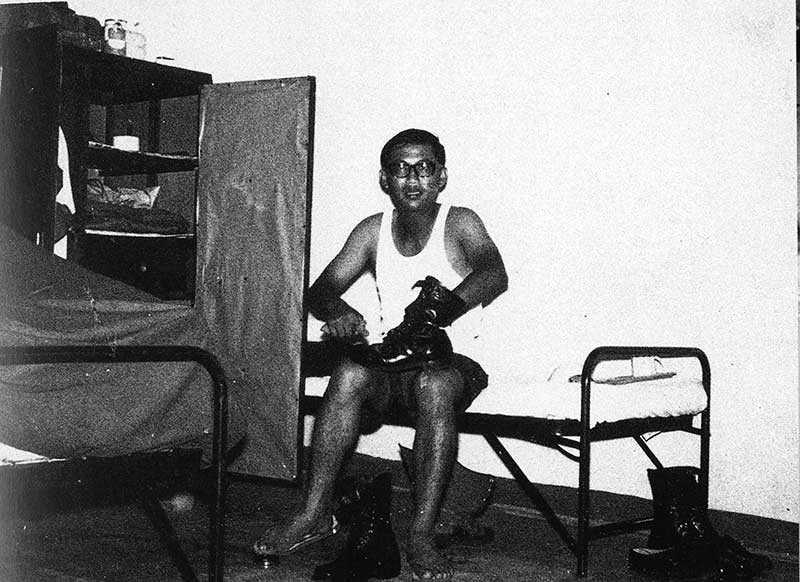
In the old days, soldiers spent countless hours late into the night polishing their boots to a shine in which they could see their reflection. Today, troops just need to brush shine their boots.
Open-palm salute
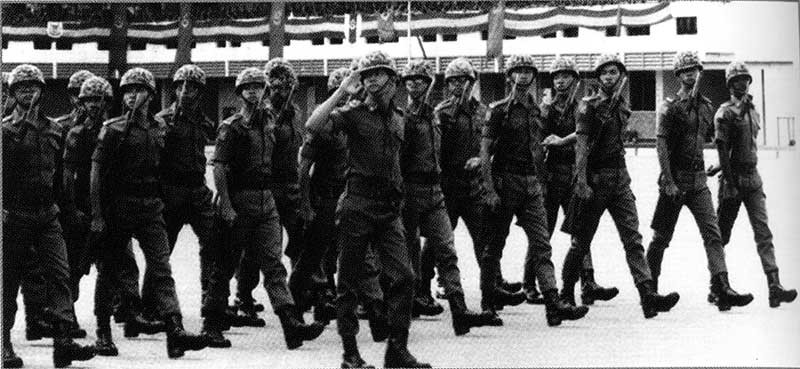
The SAF practised the British-styled salute until 1976. The change to the current style came about because Navy personnel's open-palm salute looked unsightly. They wore white gloves which were often dirtied in their course of work.
Holding hands

In the past, servicemen in uniform were strictly not allowed to be seen in the public holding hands with their girlfriends or wives. This is no longer the case today. However, soldiers are still encouraged to behave in a manner expected of a gentleman.
ALSO READ IN MILESTONES
-dsc_2181.jpg?sfvrsn=cf9c6464_2)
What you need to know about the new CMPB
14 Oct 2025
The new Central Manpower Base (CMPB) at Bukit Gombak officially opened its doors on 14 Oct, welcoming pre-enlistees, servicemen and the public alike to a state-of-the-art, one-stop hub for all things National Service (NS).
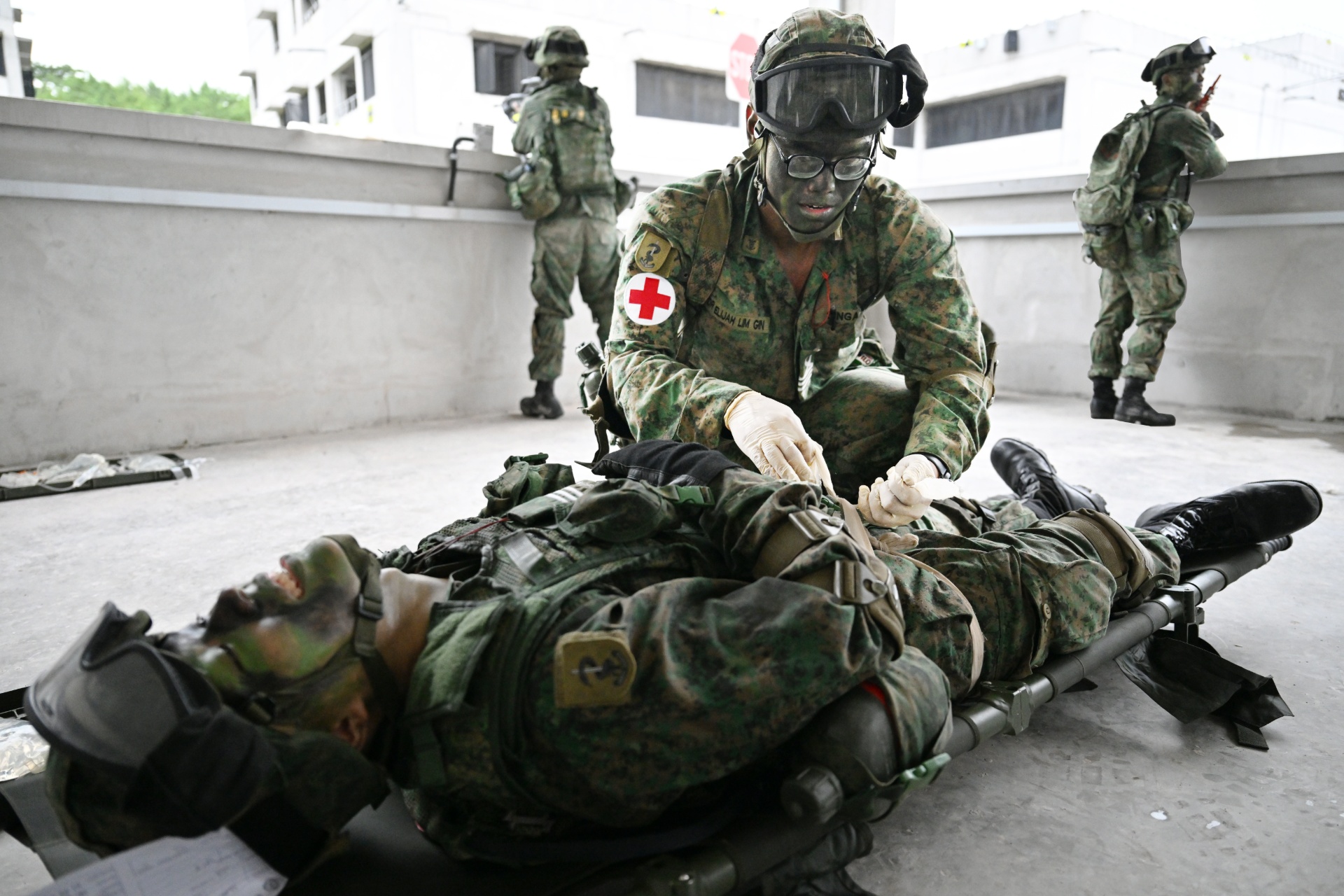
What it takes to become a medical officer
07 Oct 2025
This October, we celebrate the 100th batch of graduates from the Medical Officer Cadet Course. What does it take to become a military doctor? We uncover the highlights!
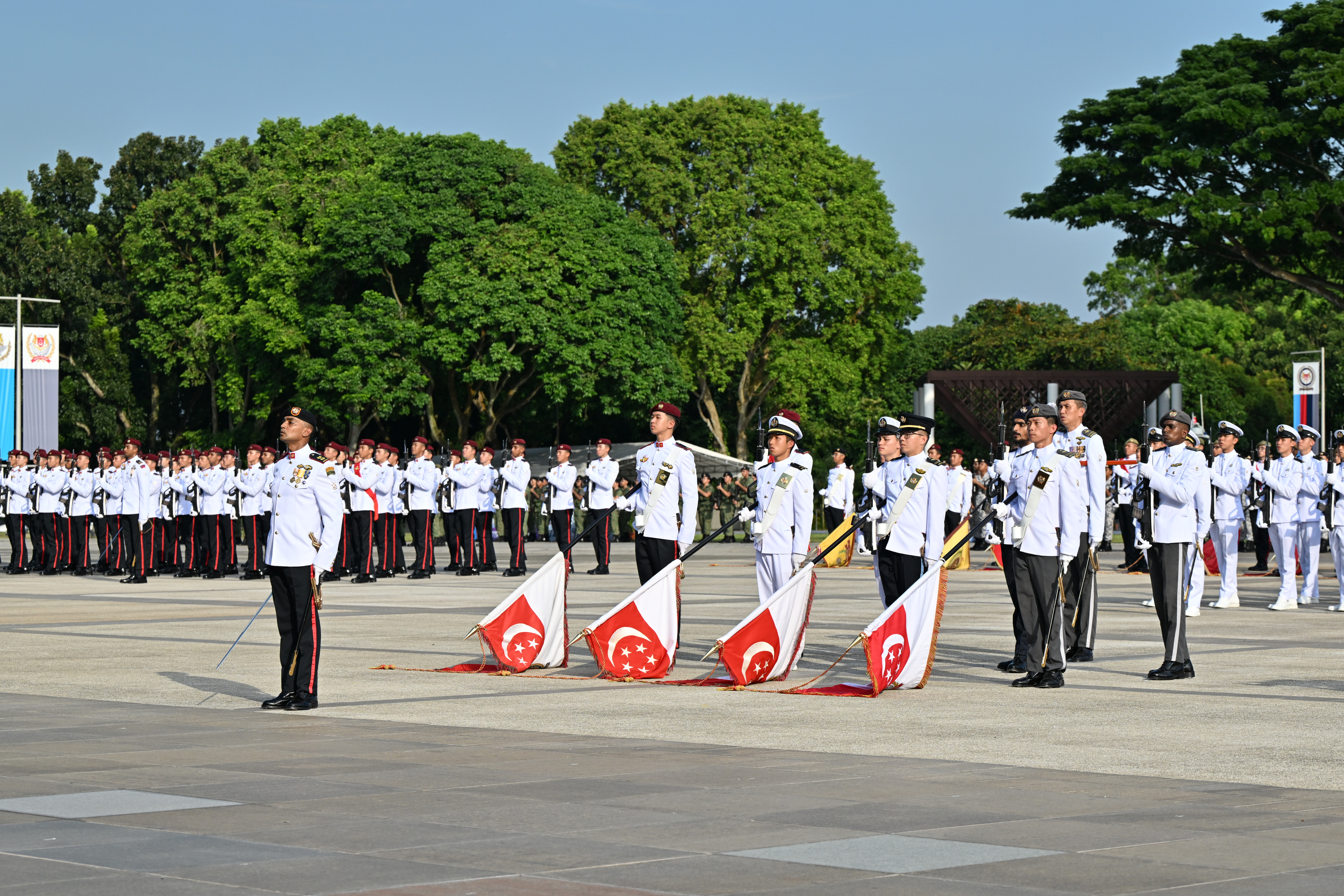
60 years on, their commitment remains strong
01 Jul 2025
The SAF celebrated its 60th anniversary on 1 Jul with a special SAF Day Parade and Combined Rededication Ceremonies across Singapore.

